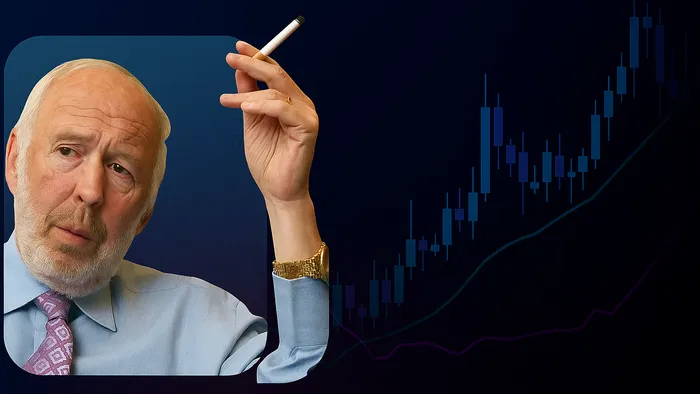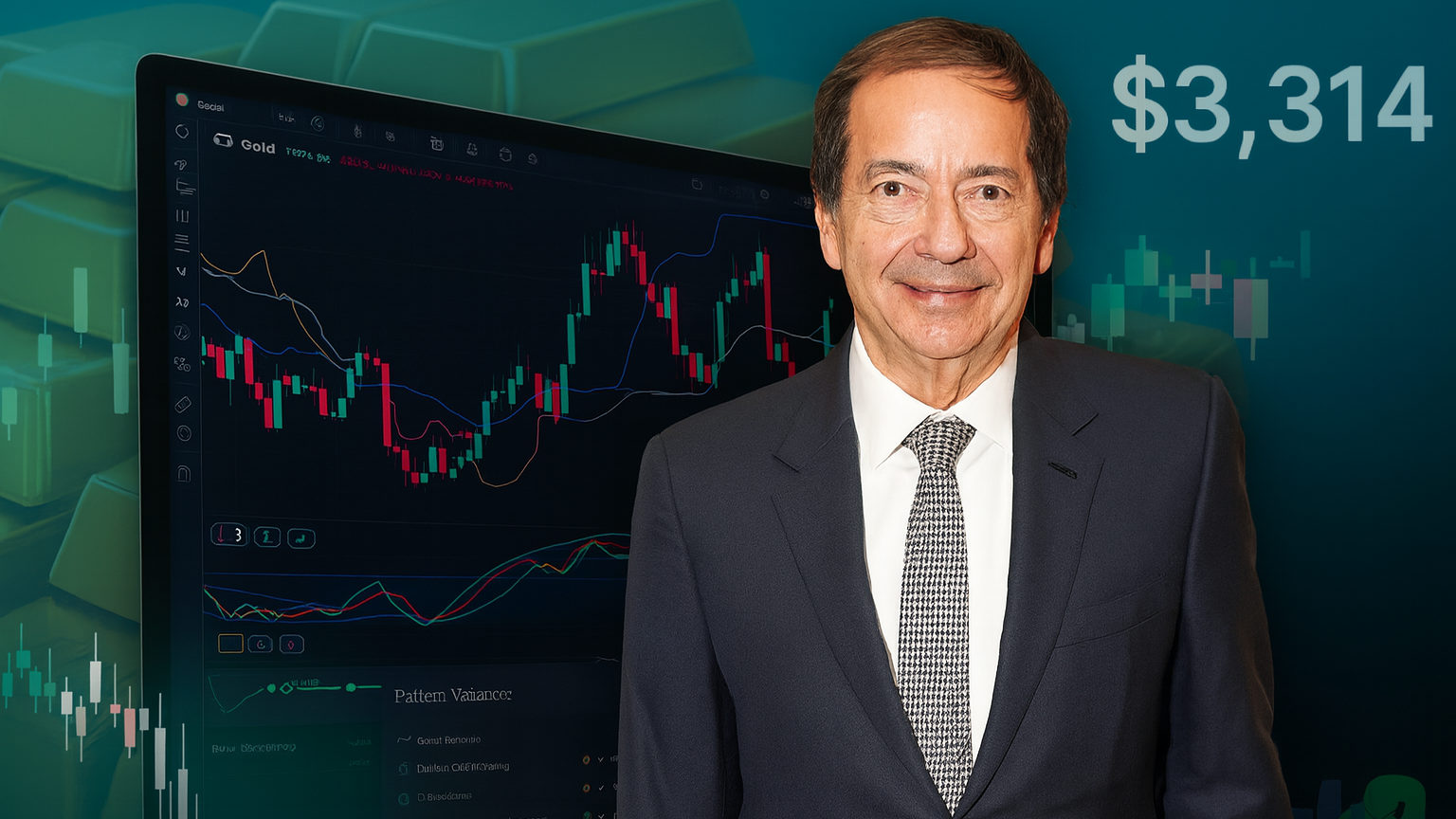Explore the revolutionary trading strategies of a leading quantitative firm that leverages data analysis and algorithms for exceptional returns.
- Data-Driven Models: Renaissance Technologies uses algorithms to identify subtle market inefficiencies.
- Market-Neutral Strategies: Balancing long and short positions reduces risk.
- Unique Hiring: Scientists and mathematicians, not Wall Street veterans, build their trading models.
- Exceptional Results: Even during crashes like 2008, Medallion outperformed with a 74.6 % return.
This guide breaks down Renaissance’s methods, risk management, and how algorithmic trading dominates today, making up 60-73 % of U.S. equity trades. Let’s explore how Simons’ approach reshaped modern trading.
Renaissance Technologies: Company Origins

Jim Simons: From Mathematics to Trading
Jim Simons, known for his work in mathematics and cryptography, founded Monemetrics, a currency-trading firm that later became Renaissance Technologies. By 1982, Simons rebranded the firm and brought in experts like Leonard Baum and James Ax to develop quantitative models for commodity-futures trading. His transition from academia to finance helped turn trading strategies into a data-driven discipline.
Simons fostered a collaborative environment at Renaissance Technologies, describing his approach:
"My algorithm has always been: you get smart people together and you give them a lot of freedom. Create an atmosphere where everyone talks to everyone else, they're not hiding in a corner with their own little thing, they talk to everybody else. And you provide the best infrastructure, the best computers and so on. And make everyone partners. That was the model that we used in Renaissance." – James Simons
The Rise of Quantitative Trading
Simons revolutionized trading by applying data-focused models, moving away from the traditional reliance on fundamental analysis. Renaissance Technologies became a leader in using quantitative analysis of historical market data.
The Medallion Fund, launched in 1988, proved the success of this approach and Simons’ unconventional hiring practices. The fund’s performance speaks for itself:
| Period | Achievement | Metric |
|---|---|---|
| 1988–2018 | Average Annual Return (Gross) | 66.1 % |
| 1988–2018 | Average Annual Return (Net) | 39.1 % |
| 1988–2018 | Total Trading Profits | Over $100 billion |
| Trading Success Rate | Win Rate | 50.75 % |
Robert Mercer highlighted the effectiveness of their strategy:
"We're right 50.75 % of the time, but we're 100 % right 50.75 % of the time. You can make billions that way."
Simons explained their data-first philosophy:
"We don't start with models. We start with data. We don't have any preconceived notions. We look for things that can be replicated thousands of times."
This innovative approach laid the foundation for the Medallion Fund’s extraordinary achievements.
Renaissance Technologies – Trading Strategies Revealed
Key Trading Methods at Renaissance
Renaissance transformed trading by utilizing cutting-edge statistical techniques and technology to identify lucrative market opportunities. These methods form the core of Jim Simons’ game-changing approach.
Data Analysis in Trading
Renaissance’s strategy revolves around analyzing vast amounts of market data to spot patterns in price movements that are not entirely random. By processing historical data, their systems identify subtle market inefficiencies through detailed statistical analysis. The results speak for themselves, particularly in the performance of the Medallion Fund:
| Time Period | Performance Metric | Result |
|---|---|---|
| 1994–2014 | Average Annual Return (Pre-fees) | 71.8 % |
| 34-Year Period | $1,000 Investment Growth | $90.1 million |
"Patterns of price movement are not random. However, they're close enough to random so that getting some excess, some edge out of it, is not easy and not so obvious."
Armed with these insights, Renaissance employs strategies that aim to balance risk while maintaining market neutrality.
Market-Neutral Trading
Using its advanced data-driven approach, Renaissance implements market-neutral strategies to reduce systematic risk. This means holding balanced long and short positions across related securities. A key focus is on convergence trades, where price differences between similar assets are expected to close over time.
Key elements of their market-neutral strategy include:
- Statistical Arbitrage: Exploiting temporary price mismatches between related securities.
- Risk Balancing: Maintaining equal exposure on long and short positions.
- Correlation Analysis: Trading asset pairs with historically linked price movements.
Model Development Process
Renaissance’s trading models are built by a team of around 150 researchers and programmers, with half holding PhDs in fields like physics, mathematics, and computer science. Their machine-learning systems adjust to market changes in real time, refining strategies as they go. Here’s how their model-development works:
- Pattern Recognition: Spotting repeatable market behaviors and turning them into actionable rules.
- Algorithm Development: Translating patterns into executable trading strategies.
- Risk Assessment: Using AI tools to identify and manage potential vulnerabilities in portfolios.
- Performance Optimization: Fine-tuning strategies to account for factors like execution impact and slippage.
Renaissance focuses on shorter-term trades, leveraging statistical advantages while avoiding long-term market risks. Their non-linear models capture intricate relationships shaped by various market forces, setting them apart from more conventional quantitative methods.
Medallion Fund Analysis
The Medallion Fund stands as a prime example of Renaissance Technologies’ data-driven approach to investing. Its performance has consistently challenged conventional market-efficiency theories with extraordinary returns.
Fund Results and Structure
The Medallion Fund’s track record highlights its distinct approach to quantitative investing. From 1988 to 2018, a $100 investment ballooned to $398.7 million, reflecting a compound annual return of 63.3 %. In stark contrast, the same $100 invested in the CRSP value-weighted market index during that period would have grown to just $1,910, with a 9.98 % compound annual return.
| Period | Medallion Performance | Market Context |
|---|---|---|
| 1988–2018 | 63.3 % compound return | 9.98 % market return |
| Dot-com Crash | 56.6 % return | Market decline |
| 2008 Financial Crisis | 74.6 % return | –38 % S&P 500 return |
| 1994–2014 | 71.8 % pre-fee return | Standard market returns |
What sets the fund apart is its employee-only investment policy, implemented in 1993. Even with steep fees – 5 % management and 44 % performance since 2002 – the fund has never reported annual returns below 31.5 %.
Risk Control Methods
The Medallion Fund employs leverage of 12.5×, occasionally reaching 20×. This high leverage is managed through several mechanisms:
- Statistical Precision: The fund has a success rate of about 50.75 % on its trades. However, the sheer volume of transactions has resulted in billions of dollars in profits.
- Market Independence: Regression analysis reveals a beta of approximately –1.0 against the CRSP market index, indicating a negative correlation with overall market trends.
- Dynamic Position Management: Thousands of short-term positions are opened and closed regularly, all while adhering to stringent risk parameters.
The fund’s resilience during market downturns is noteworthy. For instance, during the 2008 financial crisis, when most funds faced heavy losses, Medallion achieved a remarkable 98 % return. This success underscores Jim Simons’ principle of allowing data to drive decisions.
In terms of risk-adjusted performance, the fund’s Sharpe ratio exceeds 2.0. With a standard deviation of 31.7 % and an arithmetic mean return of 66.1 %, this ratio highlights Medallion’s ability to deliver strong returns relative to the risk it takes.
Practical Trading Applications
Modern trading systems focus heavily on automation and combining machine intelligence with human expertise, drawing inspiration from the quantitative methods of firms like Renaissance Technologies.
Trading Automation Steps
Creating automated trading systems involves building data-driven processes that reduce emotional bias and improve accuracy. Here’s a breakdown of the key steps:
- Data Collection: Set up reliable data channels to gather market metrics like price movements, trading volume, economic indicators, and alternative data.
- Strategy Development: Develop rule-based strategies that outline entry and exit points, position sizes, and risk-management guidelines.
- Testing Environment: Use backtesting and forward testing to evaluate strategies under various market conditions.
Thorough testing is critical before moving to live trades to ensure strategies perform as expected.
Combining AI and Human Input
A study found that 80 % of financial-services executives believe blending human and machine intelligence leads to better results.
"The integration of AI into investment decision-making isn't about choosing between humans or machines. Instead, it's about harnessing the strengths of both." – Nuant
This partnership between AI’s speed and human judgment enhances trading outcomes. Here’s how the roles are divided:
| Component | AI Role | Human Role |
|---|---|---|
| Data Analysis | Process large datasets efficiently | Select relevant data and add context |
| Strategy Development | Detect patterns and correlations | Define goals and constraints |
| Risk Management | Monitor markets and trigger alerts | Make final calls on risk adjustments |
| Performance Review | Generate detailed performance metrics | Analyze results and fine-tune strategies |
Modern Trading Tools
LuxAlgo offers an AI Backtesting Assistant, advanced signal-optimization features, and real-time market scanning. These capabilities help traders refine strategies across various timeframes and markets.
Another example is Nurp, whose Odyssey algorithm showcases the power of quantitative trading. Since July 2022, it has executed 6,000 trades monthly, achieving a 63 % win rate, a 483.78 % cumulative return, and a 4.94 % peak drawdown.
For traders using data-driven methods, solutions like LuxAlgo provide automated alerts, an AI Backtesting Assistant, and advanced optimization tools, ensuring disciplined and effective execution.
Quantitative vs Manual Trading
Renaissance’s methods and modern trading tools highlight the differences between quantitative systems and traditional manual trading. These approaches vary significantly in methodology and results, with data-driven algorithms reshaping market analysis and trade execution.
Method Comparison
Renaissance’s Medallion Fund, with its impressive 66 % average annual return, showcases the power of algorithmic trading.
| Aspect | Quantitative Trading | Manual Trading |
|---|---|---|
| Decision Process | Relies on algorithms and statistical models | Based on human judgment and intuition |
| Execution Speed | Executes trades in milliseconds | Takes 10+ seconds per trade |
| Emotional Impact | Avoids emotional bias entirely | Prone to psychological influences |
| Analysis Scope | Handles massive data volumes efficiently | Limited by human cognitive ability |
| Trading Hours | Operates 24/7 | Restricted by human endurance |
| Cost Structure | High initial setup, lower ongoing costs | Lower setup costs, higher manual-oversight expenses |
| Backtesting | Thorough statistical validation | Limited historical testing capabilities |
Manual traders typically rely on chart patterns and market conditions, while quantitative strategies depend on mathematical models and statistical analysis. This shift to data-driven processes has redefined trading.
Algorithms can process thousands of variables in milliseconds, identifying inefficiencies that manual traders might miss. This computational ability allows for precise analysis across multiple securities and markets simultaneously.
However, quantitative trading requires advanced technology, strong mathematical expertise, and constant model updates. Despite these demands, it has shown greater consistency and scalability in today’s markets.
As trading tools continue to advance, understanding the advantages of both systematic and discretionary methods can help traders refine their strategies. This insight is especially useful when integrating automated solutions like those mentioned earlier.
Conclusion
Renaissance Technologies’ impressive track record – highlighted by the Medallion Fund’s 66 % annual return – shows just how effective quantitative trading can be. Jim Simons’ reliance on data and mathematical models has changed the game, using algorithms to pinpoint tiny inefficiencies in the market.
This approach aligns with modern trends, where AI-driven algorithms now manage 80 % of trades in U.S. markets. The growing reliance on computational power and statistical analysis underscores the importance of spotting and acting on these small market opportunities.
Simons’ observation – that while price movements may seem random, they still present statistical patterns that can be exploited – remains a cornerstone for traders. For anyone looking to succeed with quantitative strategies, blending advanced tools with disciplined execution is a must.
Today, providers such as LuxAlgo make algorithmic trading more accessible. By offering features such as AI-powered backtesting and advanced signal generation, they help traders apply data-driven methods inspired by Renaissance’s approach.
Looking ahead, the integration of data and technology is shaping the future of trading. McKinsey estimates AI could boost global financial-services profits by $3.8 trillion annually by 2025. While no strategy guarantees success, adopting quantitative methods is becoming increasingly important in navigating today’s complex markets.








